Minkus: La Bayadére (Royal Ballet)
Introduction
La Bayadére (the name given to a female dancer in an ancient Indian temple), being one of the great classical ballets originating from the Russian Imperial Ballet, has, of course, been revived in many productions since its inception in 1876-77. Here, the Royal Ballet presents a version by Natalia Makarova, which she developed for the American Ballet Theatre in 1980 (and, it seems, re-developed in 1989), and was itself derived from two other versions, which were themselves derived from the original choreography by Marius Petipa...so, there you go.
The music, ostensibly by Ludwig Minkus, yet here re-orchestrated by John Lanchbery for Makarova's production (the original score had thought to be long lost at that time) is functional at best, and fairly forgettable at other times, yet this is the way things were in those days...the composer had to fit in with the demands of the ballet masters, and in Minkus's case, he had generally already written many pieces of ballet music without knowing what they would be used for.
Anyway, here's the plot, such that it is...
Nikiya (the temple dancer) and Solor (a warrior) have sworn eternal love to each other, yet the High Brahman (the priest) is also in love with Nikiya and is, understandably, extremely jealous. Just to add a little bit of complexity to the situation, the Rajah has already decided that his own daughter, Gamzatti, will be married to Solor.
The High Brahman, in an attempt to get Solor killed, tells the Rajah about the original arrangement, but the Rajah decides it must be Nikiya that dies, Gamzatti has overheard the plan and summons Nikiya to persuade her to give up her love. Nikiya refuses and tries to kill Gamzatti, but is thwarted by Gamzatti's maid. Gamzatti also condemns the poor dancing girl.
Nikiya is commanded to dance at the betrothal ceremony for Solor and Gamzatti, which she does, reluctantly. She receives a basket of flowers, which she believes is from Solor, and her dance becomes considerably more lively. Unfortunately for her, it also contains a venomous snake, placed there on the orders of the Rajah and Gamzatti. She is bitten and dies, refusing the antidote offered to her by the High Brahman.
Solor is depressed, and takes to opium to ease the pain of Nikiya's death. In the subsequent drug-induced dreams, he sees Nikiya again. She has been transformed into a perfect spirit, embodying everything good about the soul Solor once loved. Many other spirits ('The Shades') also appear, all looking exactly like Nikiya.
Solor wakes on the eve of his wedding to Gamzatti, and during the ceremony, Nikiya's spirit returns to haunt him. When the High Brahman is completing the ceremony, the Gods destroy the temple as retribution for Nikiya's murder. The souls of Solor and Nikiya are finally reunited.
Video & Audio
Excellent NTSC video brings the colours and lighting out effectively, and I suspect the soft-focus I thought I experienced during 'The Shades' sequence was quite deliberate…at least I hope it was!
Sound-wise, there's little to complain about, as the orchestra balance is nigh-on perfect, with just a little help from the microphones when particular instrumental solos need to be brought to the fore.
Extras
More satisfying than most, this DVD contains enlightening chats from Tamara Rojo, a couple of the Corps de Ballet, who are quite forthcoming in describing the troubles (mostly cramp) and triumphs (more applause than the principals) of being members of the troupe and a 20 minute amalgam of rehearsal footage with the two main dancers overseen by the RB's coach, Alexander Agadzhanov.
An audio-only talk (more in the style of a public address) is also on offer from Natalia Makarova.
The booklet itself contains an informative essay about the work by the London-based dance expert, Giannandrea Poesio.
More tellingly, there is no mention at all of Ludwig Minkus, or John Lanchbery's work in bringing the score to life. Perhaps, unlike the great Tchaikovsky ballets, this is a tacit admission that the music is of secondary (if that!) importance to the action on stage.
Conclusion
So, this is almost certainly a ballet for dance aficionados rather than musicians, as however good John Lanchbery's re-orchestration of Minkus's music is, the 'by numbers' feeling of the original composition is plain to see, or indeed, hear, and in the extras, even Tamara Rojo admits that the work isn't popular with musicians. Having said that, there is still much to enjoy, most notably the playing of the Orchestra of the ROH, and especially the solos of either Peter Manning or Peter Schulmeister. I say 'either', as this DVD was apparently recorded over two nights, with both players being credited in the DVD booklet and so I assume that there was some sharing of gigs going on. Whoever it was plays brilliantly, and makes the vicious technical demands sound like trivial challenges while still giving out as much musicality as they could.
The production itself is pretty lavish, with all the (almost) stereotypical images you would expect from a mythical ancient-Indian setting. Costumes are fascinating, and suitably flimsy and the lighting is excellent, but they haven't got the live elephants that were used in productions many years ago, although there is an unconvincing dead stuffed tiger to prove the bravery of Solor.
Talking of Solor, Carlos Acosta strikes an imposing figure as the rather arrogant and cold character, although I'm not sure he's supposed to be as cold as Acosta makes out. Maybe I felt this as there seems to be less facial expressions from him than there could have been. He certainly emotes less than the others. Dancing-wise however, he's in impressive, if possibly too-careful form, but the famous solo in the Garden of the Palace explodes into life, and we can then see how important this man is to the Royal Ballet.
As the tragic Nikiya, Tamara Rojo is stunning. Her relatively slight form belies the strength and power such a role demands and she gives everything to the character, from a very human young girl before her death to an almost goddess-like vision within Solor's drug-induced visions after. Her 'duet' with Marianela Nuñez's imposing and vicious Gamzatti is almost worth the money in itself, and is yet another reminder why anything with Nuñez performing is in need of watching.
Two other performances are certainly in need of a mention, the first being Yuhui Choe's amazing solo in The Kingdom of The Shades (the final 30 seconds of which shows exactly why ballet dancers have such trouble with joint pain) and José Martin's remarkable Bronze Idol (it used to be called the Golden Idol, but I'm assuming the austerity measures have intervened) which, for just a couple of minutes, transports us into the real heart of the magic that a great ballet can bring…though I'd hate to think how long all that body paint took to put on and wash off!
I suspect the main reason for the need to watch this ballet is how the Corps carry off the quite beautiful entrance of 'The Shades'. Here, the RB girls put on a fine show with the first one out having to endure 39 arabesques and a few other moves, with the rest following in unison (well, practically) down a ramp and around the stage. The ramp was, according to what we here in the extras, quite wobbly, and so this makes their efforts even more astonishing. With the smallest girl out first, this section with the lovely, yet highly repetitive, music creates a hypnotic effect that has drawn in the audiences for decades.
So, greater than the sum of its parts? I'm not sure. The appeal to the newcomer of La Bayadére certainly isn't as instant as let's say, the more popular Tchaikovsky ballets, and doesn't quite hit the darkness of Mayerling, yet retains a unique charm and depth of its own, despite the rather anodyne music and the simplest of plots. The strengths of the work, and these are certainly in evidence on this DVD, come from the commitment of the whole company to deliver set pieces with the world-class quality you would expect from the Royal Ballet, and this, together with the impressive disc production, gives it the mark it has. The only reason it hasn't got 10 out of 10 is the fact that there's no mention of the music.
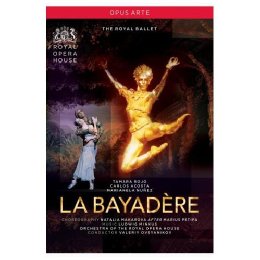
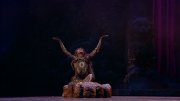
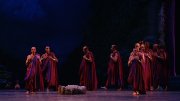

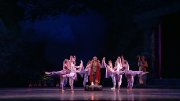
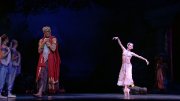

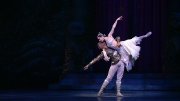
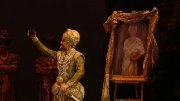
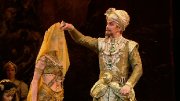

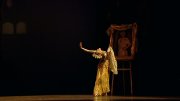
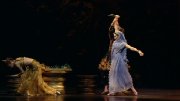

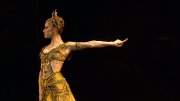
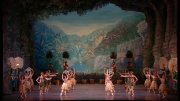
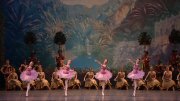
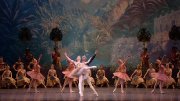
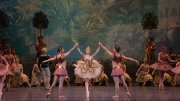
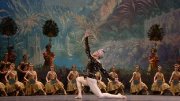
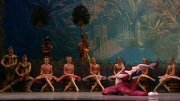


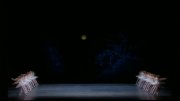
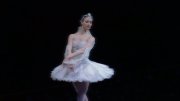
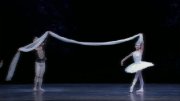
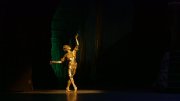
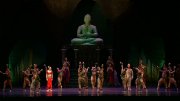
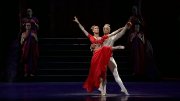

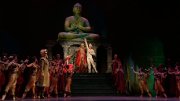































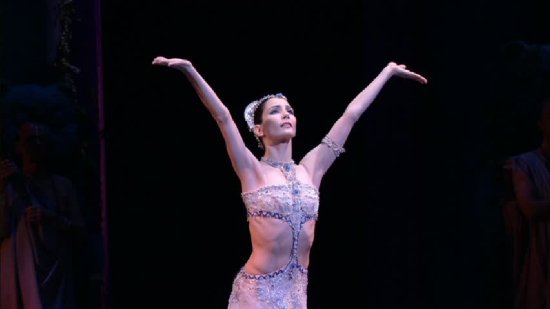










Your Opinions and Comments
Be the first to post a comment!